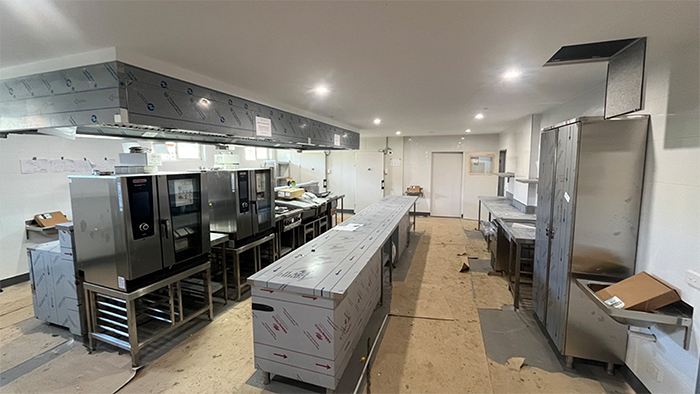Opening or upgrading a commercial kitchen in New South Wales? This guide maps the end-to-end approval pathway for Sydney/NSW venues—who approves what, when to apply, and which technical documents get you signed off the first time. It covers council notification/licensing under the Food Act 2003 (NSW), the NSW Food Authority, ventilation under the NCC and AS 1668.2, and EPA NSW noise/odour expectations.
Why approvals matter (and where projects stall)
- Legal to trade: Councils administer the Food Act locally; many businesses must notify council, and certain high-risk categories require an NSW Food Authority licence.
- Ventilation compliance: The NCC requires kitchen local exhaust ventilation; the design/installation generally follows AS 1668.2.
- Amenity protection: Correct discharge and balanced make-up air reduce odour/noise complaints and help satisfy EPA NSW expectations.
NSW approval pathway (start → finish)
1) Site checks & early design
- Zoning & heritage: External ducts/fans and rooftop plant often trigger a Development Application (DA), especially in heritage conservation areas. Check the NSW Planning Portal and Heritage NSW.
- Ventilation concept: Define canopy capture, duty (L/s), duct routes, discharge location and make-up air. NCC anchors requirements; design typically follows AS 1668.2.
- Coordinate early: Engage your mechanical contractor and certifier (council or private) early to align drawings and specs.
2) Food Act notification/licensing
- Council notification/approval: Most fixed premises notify/register with the local council under the Food Act 2003 (NSW).
- NSW Food Authority licence (where applicable): Some higher-risk businesses require licensing—see Starting a food business.
- Mobile/temporary stalls/food trucks: Follow your council’s mobile food trading requirements via the Planning Portal and council webpages.
3) Building approvals & documentation
Submit plans to your certifier (council/private). Include canopy schedule, fan curves, duct sizes, discharge details, and a balanced make-up air strategy. Reference
NCC Part F6 (Kitchen local exhaust ventilation) and design to AS 1668.2. Keep product data sheets ready (canopy, filters, fans, lights).
4) Planning permit triggers (DA/CD)
- External works: Rooftop fans/cowls, visible duct risers and façade penetrations can require a DA. Some minor fit-outs may qualify as Complying Development; confirm via the Planning Portal.
5) Odour & noise (EPA NSW)
- Odour: Prefer vertical discharge above roof level, separated from air intakes/neighbours. See EPA NSW – Odour.
- Noise: Review EPA NSW – Noise guidance and consider acoustic isolation where sensitive receivers are nearby.
6) Install, commission & final sign-off
- Install canopy, ductwork, fan and controls to approved drawings and AS 1668.2.
- Commission airflow; verify capture and discharge; balance supply/exhaust to avoid negative pressure.
- Environmental Health Officer checks Food Act compliance; your certifier issues final occupation documentation.
What your council & certifier expect to see
- Plans: Kitchen layout and elevations showing external duct/fan locations.
- Ventilation schedule: Hood types/sizes, duty (L/s), duct sizes, discharge method, make-up air volumes/locations.
- Product data: Canopy, aluminium honeycomb filters, fan datasheets and LED task lighting.
- Food safety: Process flow, hand-wash and cleaning plans; council notification and any NSW Food Authority licensing evidence.
Common pitfalls (and fast fixes)
- No make-up air: Causes smoke spillage and door slam—balance supply and exhaust from day one.
- Poor discharge location: Leads to odour complaints. Favour vertical, above-roof discharge away from intakes and neighbours.
- Late heritage checks: Confirm conservation areas and visibility of plant early to avoid DA delays.
- Fan noise: Choose low-noise options, add isolation and verify against EPA NSW guidance.
Quick links (NSW)
Get it right the first time with NXT GEN Canopies
We design and manufacture compliant canopies in Melbourne and install Australia-wide—including Sydney and regional NSW. Ask us about capture efficiency, make-up air and discharge options, then hand our specification pack to your certifier and council EHO.
FAQs
Do I always need council approval in NSW?
You must notify/register with your local council under the Food Act 2003 (NSW). Some higher-risk operations also require an NSW Food Authority licence. DA/compliant development requirements depend on your site and scope.
What is NCC F6D12 and why does it matter?
NCC Part F6 includes Kitchen local exhaust ventilation requirements; designers then apply AS 1668.2 for capture, exhaust rates, ducting and discharge.
Who regulates odour and noise from my exhaust in NSW?
EPA NSW provides guidance for odour and noise. Good practice includes vertical discharge above roof level, separation from intakes/neighbours and acoustic treatment where needed.
Do food trucks follow different steps?
Mobile/temporary vendors must meet council requirements (location/event approvals) and Food Act obligations. Check your council page via the NSW Planning Portal.
Ready for a compliant quote? Speak with our team about canopy selection, make-up air and discharge so your certifier and council sign off first time.
